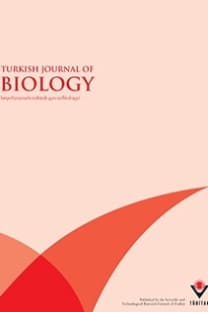Effects of celecoxib and L-NAME on apoptosis and cell cycle of MCF-7 CD44+/CD24 /low subpopulation
Effects of celecoxib and L-NAME on apoptosis and cell cycle of MCF-7 CD44+/CD24 /low subpopulation
___
- Al-Hajj M, Wicha MS, Benito-Hernandez A, Morrison SJ, Clarke MF (2003). Prospective identification of tumorigenic breast cancer cells. P Natl Acad Sci USA 100: 3983-3988.
- Amale MH, Shahne AZ, Abavisani A, Nasrollahi S (2011). Effects of inhibiting nitric oxide synthase on cumulus expansion and nuclear maturation of sheep oocytes. Czech J Anim Sci 56: 284-291.
- Ashok V, Dash C, Rohan TE, Sprafka JM, Terry PD (2011). Selective cyclooxygenase-2 (COX-2) inhibitors and breast cancer risk. Breast 20: 66-70.
- Bocca C, Bozzo F, Bassignana A, Miglietta A (2011). Antiproliferative effects of COX-2 inhibitor celecoxib on human breast cancer cell lines. Mol Cell Biochem 350: 59-70.
- Carrasco E, Álvarez PJ, Prados J, Melguizo C, Rama AR, Aránega A, Rodríguez‐Serrano F (2014). Cancer stem cells and their implication in breast cancer. Eur J Clin Inves 44: 678-687.
- Charles N, Ozawa T, Squatrito M, Bleau AM, Brennan CW, Hambardzumyan D, Holland EC (2010). Perivascular nitric oxide activates notch signaling and promotes stem-like character in PDGF-induced glioma cells. Cell Stem Cell 6: 141- 152.
- Chen C, Shen HL, Yang J, Chen QY, Xu WL (2011). Preventing chemoresistance of human breast cancer cell line, MCF-7 with celecoxib. J Cancer Res Clin 137: 9-17.
- Dai ZJ, Ma XB, Kang HF, Gao J, Min WL, Guan HT, Diao Y, Lu WF, Wang XJ (2012). Antitumor activity of the selective cyclooxygenase-2 inhibitor, celecoxib, on breast cancer in vitro and in vivo. Cancer Cell Int 12: 1-8.
- Dubois RN, Abramson SB, Crofford L, Gupta RA, Simon LS, Van De Putte LB, Lipsky PE (1998). Cyclooxygenase in biology and disease. FASEB J 12: 1063-1073.
- Ekmekcioglu S, Ellerhorst JA, Prieto VG, Johnson MM, Broemeling LD, Grimm EA (2006). Tumor iNOS predicts poor survival for stage III melanoma patients. Int J Cancer 119: 861-866.
- Gee JR, Burmeister CB, Havighurst TC, Kim K (2009). Cyclinmediated G1 arrest by celecoxib differs in low-versus highgrade bladder cancer. Anticancer Res 29: 3769-3775.
- Jaggupilli A, Elkord E (2012). Significance of CD44 and CD24 as cancer stem cell markers: an enduring ambiguity. Clin Dev Immunol 2012: 708036.
- Jeong HS, Kim JH, Choi HY, Lee ER, Cho SG (2010). Induction of cell growth arrest and apoptotic cell death in human breast cancer MCF-7 cells by the COX-1 inhibitor FR122047. Oncol Rep 24: 351-356.
- Mazhar D, Ang R, Waxman J (2006). COX inhibitors and breast cancer. Br J Cancer 94: 346-350.
- Mohammed SI, Knapp DW, Bostwick DG, Foster RS, Khan KN, Masferrer JL, Woerner BM, Snyder PW, Koki AT (1999). Expression of cyclooxygenase-2 (COX-2) in human invasive transitional cell carcinoma (TCC) of the urinary bladder. Cancer Res 59: 5647-5650.
- Ohtsu N, Takaoka K, Segawa E, Hashitani S, Noguchi K, Kishimoto H, Urade M (2010). Antitumor effects of inhibitors of nitric oxide synthase or cyclooxygenase-2 on human KB carcinoma cells overexpressing COX-2. Oncol Rep 24: 31-36.
- Prueitt RL, Boersma BJ, Howe TM, Goodman JE, Thomas DD, Ying L, Pfiester CM, Yfantis HG, Cottrell JR, Lee DH et al. (2007). Inflammation and IGF-I activate the Akt pathway in breast cancer. Int J Cancer 120: 796-805.
- Regulski M, Regulska K, Prukała W, Piotrowska H, Stanisz B, Murias M (2016). COX-2 inhibitors: a novel strategy in the management of breast cancer. Drug Discov Today 21: 598-615.
- Sajadian S, Vatankhah M, Majdzadeh M, Kouhsari SM, Ghahremani MH, Ostad SN (2015). Cell cycle arrest and apoptogenic properties of opium alkaloids noscapine and papaverine on breast cancer stem cells. Toxicol Mech Methods 25: 388-395.
- Sawyer TW (1998). Characterization of the protective effects of L-nitroarginine methyl ester (L-NAME) against the toxicity of sulphur mustard in vitro. Toxicology 131: 21-32.
- Singh B, Cook KR, Vincent L, Hall CS, Martin C, Lucci A (2011). Role of COX-2 in tumorospheres derived from a breast cancer cell line. J Surg Res 168: e39-e49.
- Soltanian S, Matin MM (2011). Cancer stem cells and cancer therapy. Tumor Biol 32: 425-440.
- Soltysova A, Altanerova V, Altaner C (2005). Cancer stem cells. Neoplasma 52: 435-440.
- Sotiropoulou PA, Christodoulou MS, Silvani A, Herold-Mende C, Passarella D (2014). Chemical approaches to targeting drug resistance in cancer stem cells. Drug Discov Today 19: 1547- 1562.
- Wright MH, Calcagno AM, Salcido CD, Carlson MD, Ambudkar SV, Varticovski L (2008). Brca1 breast tumors contain distinct CD44+/CD24-and CD133+ cells with cancer stem cell characteristics. Breast Cancer Res 10: R10.
- ISSN: 1300-0152
- Yayın Aralığı: 6
- Yayıncı: TÜBİTAK
N-Acetylglucoseamine modified alginate sponges as scaffolds for skin tissue engineering
Murat DEMİRBİLEK, Selçuk AKTÜRK, Nelisa LAÇİN TÜRKOĞLU
DANICA CUJIC, MAJA KOSANOVIC, MILICA JOVANOVIC KRIVOKUCA, LJILJANA VICOVAC, MIROSLAVA JANKOVIC
Effects of celecoxib and L-NAME on apoptosis and cell cycle of MCF-7 CD44+/CD24 /low subpopulation
Maryam MAJDZADEH, Shima ALIEBRAHIMI, Melody VATANKHAH, Seyed Nasser OSTAD
Maryam MAJDZADEH, Shima ALIEBRAHIMI, MELODY VATANKHAH, SEYED NASSER OSTAD
Betül ŞAHİN, Ahmet Tarık BAYKAL
Murat DEMİRBİLEK, Eylem GÜVEN, Tamer ÇIRAK, Esma ALP, Mustafa TÜRK3
Silver nanoparticles induced genotoxicity and oxidative stress in tomato plants
Dilek ÜNAL, Fazilet Özlem ÇEKİÇ, Sefa EKİNCİ, Müslüm Süleyman İNAL
Mustafa GÜNAYDIN, Abdul Hafeez LAGHARI, Ersan BEKTAŞ, Münevver SÖKMEN, Atalay SÖKMEN
